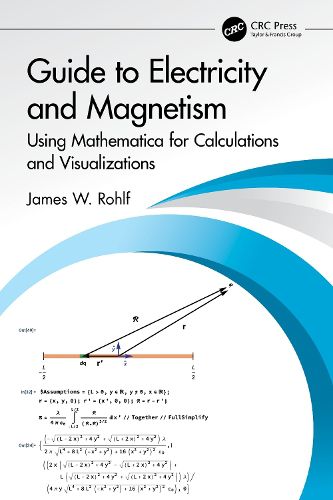Readings Newsletter
Become a Readings Member to make your shopping experience even easier.
Sign in or sign up for free!
You’re not far away from qualifying for FREE standard shipping within Australia
You’ve qualified for FREE standard shipping within Australia
The cart is loading…






This is a "how to guide" for a calculus-based introductory course in electricity and magnetism. Students taking the subject at an intermediate or advanced level may also find it to be a useful reference. The calculations are performed in Mathematica, and stress graphical visualization, units, and numerical answers. The techniques show the student how to learn the physics without being hung up on the math. There is a continuing movement to introduce more advanced computational methods into lower-level physics courses. Mathematica is a unique tool in that code is written as "human readable" much like one writes a traditional equation on the board.
Key Features:
Concise summary of the physics concepts. Over 300 worked examples in Mathematica. Tutorial to allow a beginner to produce fast results.
The companion code for this book can be found here: https://physics.bu.edu/~rohlf/code.html
$9.00 standard shipping within Australia
FREE standard shipping within Australia for orders over $100.00
Express & International shipping calculated at checkout
This is a "how to guide" for a calculus-based introductory course in electricity and magnetism. Students taking the subject at an intermediate or advanced level may also find it to be a useful reference. The calculations are performed in Mathematica, and stress graphical visualization, units, and numerical answers. The techniques show the student how to learn the physics without being hung up on the math. There is a continuing movement to introduce more advanced computational methods into lower-level physics courses. Mathematica is a unique tool in that code is written as "human readable" much like one writes a traditional equation on the board.
Key Features:
Concise summary of the physics concepts. Over 300 worked examples in Mathematica. Tutorial to allow a beginner to produce fast results.
The companion code for this book can be found here: https://physics.bu.edu/~rohlf/code.html